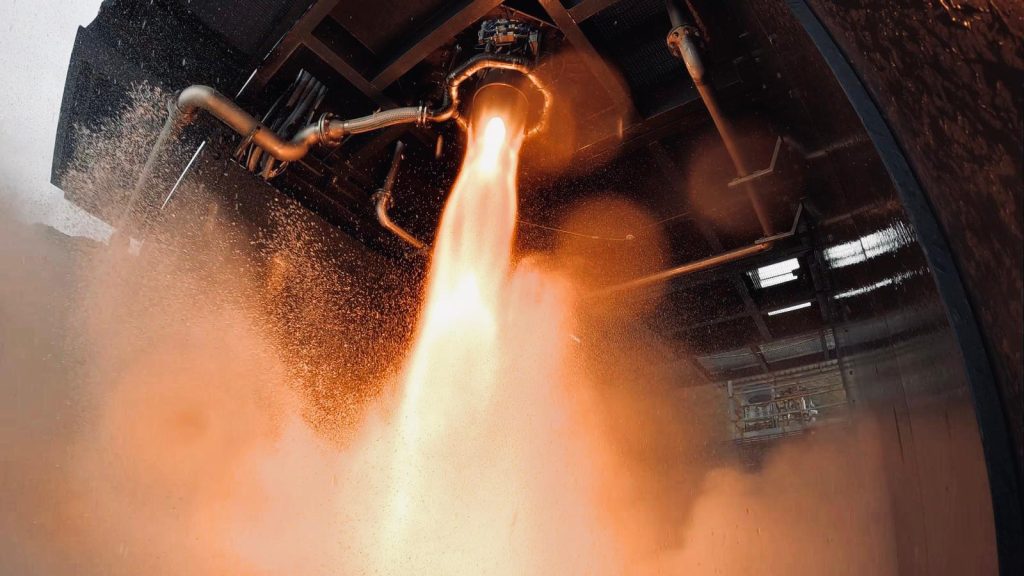Suborbital Launch Vehicles

The space industry is often celebrated for the projects which make their way to Earth’s orbit. However, a vast number of scientific contributions to the space sector and beyond are made using data collected by suborbital launch vehicles.
What is a Suborbital Launch Vehicle?
A suborbital launch vehicle is a spacecraft which reaches space yet does not climb to an altitude which allows it to orbit the Earth. In order to reach a Low Earth Orbit (LEO), spacecraft must travel at approximately 28,000 kilometres per hour, an extremely high speed which contributes significantly to the complexity of orbital spaceflight. However, suborbital vehicles travel significantly slower, achieving heights of less than 125 miles above Earth at approximately 6,000 kilometres per hour. This is still an impressive speed of about 5 times the speed of sound compared with the average speed of commercial airplanes, which fly at just 925 kilometres per hour.
When a suborbital launch vehicle reaches its highest altitude, individuals and items onboard may experience a short period of weightlessness before descending back to ground level.

What are Suborbital Launch Vehicles Used For?
While the use of suborbital vehicles is perhaps considered less exciting and certainly receives less coverage within mainstream media, their applications within the space industry are vast and incredibly useful.
Suborbital launch vehicles are commonly used for aerospace technology testing and demonstration. For example, suborbital vehicles provide the chance to qualify hardware before orbital flight or to advance the maturity of technology.
Commonly used for technology testing are sounding rockets, a type of unmanned suborbital launch vehicle which carries small scientific payloads and are used to gather data at suborbital altitudes. There are a number of disciplines which conduct both basic and applied research in microgravity environments including but not limited to Earth science, space science and human research. This type of rocket is similarly used for remote sensing, the acquisition of Earth imagery for commercial or civil purposes. Remote sensing facilitates the tracking of animal populations and habitats, weather events and civil population monitoring.
Of course, the use of suborbital launch vehicles for data collection is not exclusive to established industry players, with suborbital spaceflight used in educational missions. These types of missions gather educational data and allow students to experience the design, manufacture and launch stages of the launch vehicle life cycle. Educational suborbital missions help to shape the minds of future rocket engineers, data scientists and many more.
Space tourism is another aspect of suborbital launch which is becoming more highly recognised, with Virgin Galactic and Blue Origin both making recent suborbital flights to the edge of space in 2021 carrying founders Richard Branson and Jeff Bezos respectively. Commercial space tourism is offering civilians the chance to experience spaceflight and microgravity, albeit for a lofty price, with single trips ranging from $50,000 to $450,000 per seat.
Suborbital Launch Vehicles: A Case Study
While some uses of the suborbital launch vehicle may be more novel than others, arguably some of the most exciting work in suborbital spaceflight are the experiments and data collection which is directly benefitting those of us on Earth.
Swedish Space Corporation’s (SSC) SubOrbital Express-3 vehicle launched the Neurobeta experiment in the Autumn of 2022 with the goal of utilising the space environment to conduct an experiment from Uppsala University in Sweden. This experiment aims to answer the many unsolved questions surrounding type 1 diabetes, a disease impacting approximately nine million people. The biological experiment was conducted using living stem cells and insulin-producing beta cells exposed to microgravity for around six minutes. Microgravity has shown to facilitate the fast reproduction of beta cells, hence is set to play a part in future treatment options.
SSC conducted 11 similar microgravity experiments alongside this, including ‘Musa’, set to answer questions surrounding Panama disease, a fungus threatening the banana industry; Fortis, conducting space-based tests of the behaviour of clock mechanics in various extreme conditions; and Lab-On-Paper, finding solutions for non-invasive point of care devices for monitoring astronaut health.

Skyrora’s Suborbital Launch Vehicles
Skyrora has multiple suborbital rockets, many of which have been launched and tested as part of our incremental approach to reaching orbit. The larger of these are capable of carrying scientific payloads, carrying out experiments and collecting data while simultaneously working to solidify Skyrora’s vehicle structure and hardware before an orbital launch in the coming years.

The largest of these rockets, Skylark L, stands at 11.65 metres tall and 0.7 metres in diameter. Capable of carrying up to 50kg of payload to an apogee altitude of 102km, this two-stage suborbital vehicle successfully completed a static fire test in 2020 and completed an initial launch attempt in 2022.

Skylark Micro is the smaller of Skyrora’s two-stage suborbital rockets. An unguided launch vehicle, Micro is powered by solid rocket motors and stabilised by four fins at each rocket stage. Standing at 3.32 metres, Skylark Micro facilitates the testing of electrical engine systems under the influence of g-force, using a parachute recovery system to ensure safe landing of the vehicle and return of the payload. Micro can launch satellites with the purpose of investigating ambient conditions of various atmospheric pressures or can carry educational payloads.

Finally, the short range single stage Skylark Nano rocket is designed to simulate the launch of a larger scale vehicle. Simple and safe to launch, Nano uses solid fuel combustion engines and four stabilising fins. This vehicle has proven popular among university students for research purposes.
What’s Next for Suborbital Spaceflight?
As the suborbital spaceflight industry expands, new technology and goals emerge daily. German flight experiment STORT is undertaking the testing of new reusable rocket with the help of sounding rockets. Current testing aims to simulate the temperatures and loads undergone by boosters carrying out re-entry. Such experiments are laying the foundations for Europe to develop technology similar to that of SpaceX’s Falcon 9 and Falcon Heavy reusable boosters.
With the future of suborbital launch following the reusable route, space tourism is becoming a greater reality, creating space for the invention of newer space technologies, ground-breaking research and exciting discoveries. Suborbital flight is therefore our launchpad to near space, Earth’s orbit, and beyond.
Resources:
Mann, A. (2020) What's the difference between orbital and suborbital spaceflight?, Space.com. Space. Available at: https://www.space.com/suborbital-orbital-flight.html (Accessed: November 25, 2022).
The Tauri Group (no date) Brycetech reports, BryceTech. Available at: https://brycetech.com/reports (Accessed: November 25, 2022).
(2022) Diabetes research in Space [Preprint]. Available at: https://mb.cision.com/Main/100/3655920/1644251.pdf (Accessed: November 25, 2022).
Admin (2022) SCC announces 12 new microgravity experiments in different scientific disciplinesfrom space, Space Watch Africa. Available at: https://spacewatchafrica.com/scc-announces-12-new-microgravity-experiments-in-different-scientific-disciplinesfrom-space/ (Accessed: November 25, 2022).
Built to launch, built to lead (no date) Skyrora. Available at: https://ad.skyrora.com/ (Accessed: November 25, 2022).
Messier, D. (2022) A busy six months as suborbital spaceflight comes into its own, Parabolic Arc. Available at: https://parabolicarc.com/2022/07/12/a-busy-six-months-as-suborbital-spaceflight-comes-into-its-own/ (Accessed: November 25, 2022).
Pultarova, T. (2022) Startup Spinlaunch Aces 10th suborbital launch with high-tech slingshot, Space.com. Space. Available at: https://www.space.com/spinlaunch-aces-10th-suborbital-test-launch (Accessed: November 25, 2022).



